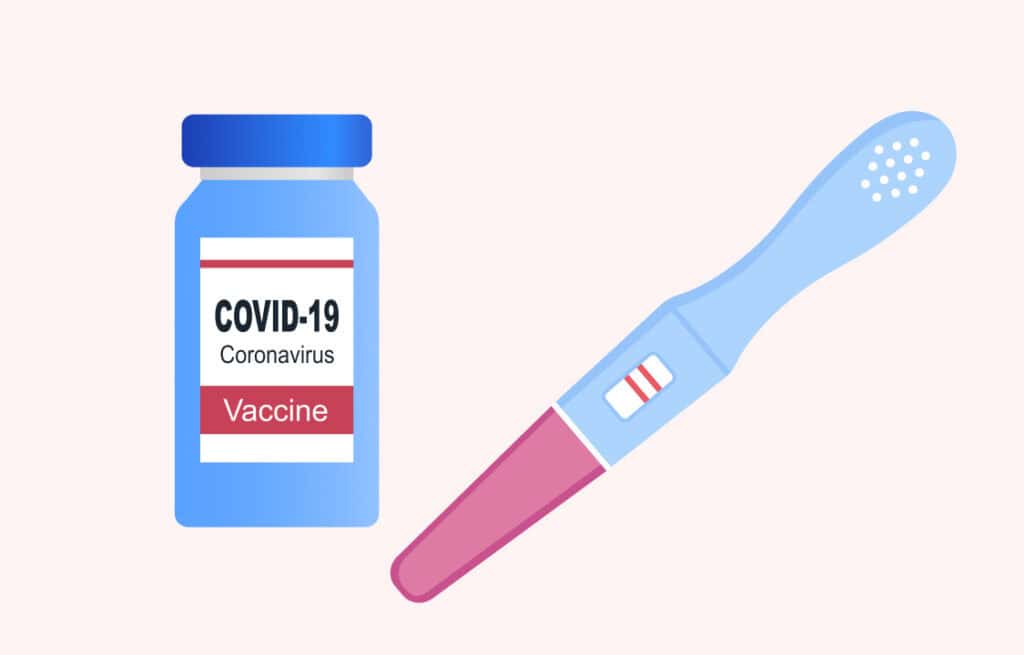Femia > Health Library > Pregnancy > Pregnancy health > First-trimester screening: Understanding genetic testing and results during early pregnancy
First-trimester screening: Understanding genetic testing and results during early pregnancy

- Updated Feb 10, 2025
- Published
CRAFTED BY HUMAN
Crafted by human At Femia, we provide accurate and up-to-date information at every stage of your journey, from trying to conceive, pregnancy and postnatal support. All content is created by a real person based on in-depth research and own professional experience. Femia ensures that you will receive expert advice, strict accuracy and a personalized approach from our authors/medical experts. Learn more about our editorial policy.
FACT CHECKED
Fact checked At Femia Health, we maintain the highest standards of editorial excellence in delivering content focused on helping you conceive, guiding you through pregnancy, and supporting you postpartum. Explore our content review principles to learn how we ensure the accuracy and quality of our health and lifestyle tips for every stage of your journey.
- First trimester screening tests are performed in the first 12 weeks of pregnancy. They assess the chances of your baby having a genetic condition.
- Screening tests usually involve an ultrasound scan and a blood test.
- If results indicate your baby has a high chance of having a genetic abnormality then further testing will likely be recommended.
During the first trimester (weeks 1–12), you’ll likely be offered several tests. Some are designed to check your own health, including checking for infections or other health conditions, while others are ‘screening tests’ for your baby.
First-trimester screening tests help assess the likelihood of certain genetic conditions in your baby. While they don’t provide a definite diagnosis, they do give an estimated risk, and are used to guide any further testing or care during your pregnancy.
Track your symptoms with Femia and get tailored
health advice right on your phone
What is the first-trimester screening?
The first trimester genetic screening is a set of tests done early in pregnancy to check on your baby’s development and assess the risk of certain genetic conditions. It usually involves two components: an ultrasound and a blood test.
- Ultrasound. Your healthcare provider will use an ultrasound machine to assess your baby including measuring the thickness of the back of their neck. This is called the nuchal translucency (NT) scan, and it looks at how much fluid is in the space behind their neck. All babies have some fluid in this space but a thicker-than-average measurement can indicate a higher risk of certain genetic disorders.
- Blood tests. These check for specific substances in your blood, such as pregnancy-associated plasma protein-A (PAPP-A) and free B—human chorionic gonadotropin (free BhCG). Abnormal levels of these markers might suggest a higher chance of the baby having a genetic condition.
👉Find out more: Understanding early decelerations in fetal heart rate monitoring
Why should I have the first-trimester screening?
First-trimester screening is used to assess the risk for the genetic conditions Down syndrome (trisomy 21), Edwards syndrome (trisomy 18), and Patau syndrome (trisomy 13). These are a group of chromosomal abnormalities where the baby has an extra chromosome that can cause severe disability and premature death. The screening is typically done between weeks 10 and 13 of pregnancy. Using a pregnancy app can help you track first-trimester milestones.
Screening test results don’t provide a definite diagnosis, but they can help you and your healthcare provider decide if further testing is needed.
First-trimester screening tests are different from the genetic testing you can have before getting pregnant. Pre-pregnancy genetic testing looks at whether you’re a carrier for certain medical conditions and at risk of passing these on to future children, whereas the first-trimester screening looks to see if your baby has a chromosomal abnormality.
Do I have to have the first-trimester screening?
First-trimester screening tests are offered to every pregnant mother during the first trimester. But, it is the mother’s choice whether or not to have them. The decision to have the screening tests is a personal one, but if you’re unsure about what to do, then it can be helpful to have a chat with your healthcare provider. They will be able to offer non-judgmental, impartial advice to help you decide what’s right for you.
It is important to know that the first-trimester screening tests cannot harm your baby and do not increase the risk of miscarriage. But, if the test reveals an increased risk of Down syndrome (T21), Edwards syndrome (T18) or Patau syndrome (T13) then it can lead to difficult decisions about whether to undergo further testing to confirm one way or another.
Genetic testing during pregnancy: First trimester
The first-trimester genetic screening tests are usually performed using an ultrasound scan and a blood test. The results, along with the mother’s age, are used together to calculate the overall chance of having a baby with T21, T18, or T13.
| What is being measured | How it is measured |
|---|---|
| Nuchal translucency | Ultrasound scan |
| PAPP-A | Blood test |
| Free BhCG | Blood test |
| Mother’s Age | — |
Understanding first-trimester screening results
The results from the first-trimester screening tests give the estimated chance of having a baby with a genetic disorder. They are not diagnostic and cannot tell you for certain if you will have a baby with Down syndrome, Edwards syndrome or Patau syndrome. They also only estimate the risk of these three genetic conditions. They cannot tell you about any other conditions.
Here’s a look at what the results from each of the tests can indicate:
- Nuchal translucency: A higher reading indicates that there is more fluid in the space behind the neck than average. Increased fluid in this area is associated with Down syndrome. However, there are many other reasons why you can have a higher than normal reading so high readings do not mean for certain that your baby has Down syndrome.
- PAPP—A: Low levels are associated with Down syndrome, having a low weight or preterm baby and the medical complication, pre-eclampsia.
- Free BhCG. Higher than normal levels are associated with babies who have Down syndrome and lower than normal levels are associated with babies with Edwards and Patau syndrome.
The measurements taken during the ultrasound and the results from the blood test, along with the mother’s age, are used together to calculate the risk of the baby having a genetic condition.
Here is an example of what the results can look like:
- T21 (Down syndrome) 1 in 300
- T18 (Edwards syndrome) 1 in 4,000
- T13 (Patau syndrome) 1 in 6,000
Each healthcare provider will have a different cut-off for what is considered ‘high risk’ but usually if the chances of a genetic disorder are greater than 1 in 150, further tests will be offered.
The PAPP-A test and its significance
PAPP-A is a protein produced by the placenta. The placenta is the organ that supplies your growing baby with oxygen and nutrients. The level of PAPP-A in your blood can be useful to help determine the health of the placenta and your growing baby.
PAPP-A levels can be measured during any trimester but they’re only concerning if they’re low. Low PAPP-A levels can indicate that there is a higher risk of one of the following conditions:
- Babies with genetic conditions like Down syndrome, Edwards syndrome and Patau syndrome
- Preterm birth. Baby born before 37 weeks
- Low birth weight. Baby born weighing under 2.5 kg
- Pre-eclampsia. A potentially serious pregnancy complication involving raised maternal blood pressure and protein in the urine.
However, having a low PAPP-A level doesn’t necessarily mean there’s a problem. Approximately 5% of pregnant women have low levels, and many go on to have normal, healthy pregnancies and babies. However, it is a valuable screening tool that helps healthcare providers identify potential complications. If your levels are found to be low, you may be offered extra monitoring or treatment during your pregnancy. This allows your healthcare provider to detect and manage any issues early on.
Next steps after receiving first-trimester screening results
If you choose to accept the first-trimester screening tests then you will receive your results within a few days to a couple of weeks. If the results show a low risk for Down syndrome, Edwards syndrome or Patau syndrome, you will continue with the standard prenatal care pathway. However, if the results indicate a higher risk, your healthcare provider will meet with you to discuss the next steps.
Possible next steps are:
- No further testing: You may decide that you do not wish to have any further genetic testing to confirm whether your baby has or doesn’t have a genetic condition.
- Non-invasive prenatal testing (NIPT): This blood test is still a screening tool, but it provides more accurate results than earlier screenings. It poses no risk to your baby and can help you decide whether to pursue diagnostic testing. It is used to screen for T21, T18, T13 and disorders affecting the sex chromosomes.
- Diagnostic tests: Amniocentesis and Chorionic villus sampling (CVS) are diagnostic tests used to determine for certain whether or not your baby has Down syndrome, Edwards syndrome, Patau syndrome or another genetic condition. These procedures are invasive and come with some risks, the most significant being miscarriage, which occurs in up to 1 in 200 women who undergo CVS or amniocentesis. There is also a risk of infection or the possibility of needing to repeat the test if it wasn’t possible to get a result the first time.
For many women, deciding on the next step can be very difficult. Your healthcare provider will be able to talk to you about the options available, the risks and benefits, and what you can expect to happen.
👉Find out more: Getting a Pap smear during pregnancy: safety, timing, and what to expect
Common misconceptions about first-trimester screening
Myth: Screening tests can tell you if you have a baby with Down syndrome, Edwards syndrome or Patau syndrome
Truth: Screening tests can give you an estimated risk of certain conditions but cannot tell you for certain whether they will, or will not, have a genetic condition.
Myth: The first-trimester screening tests can harm your baby.
Truth: The first-trimester screening tests involve an ultrasound and a blood test. They carry no risk to your baby. If you choose to undergo diagnostic tests, then these carry a 1 in 200 chance of miscarriage.
Myth: Low-risk results mean your baby definitely doesn’t have a medical condition.
Truth: The first-trimester screening only looks at the chances of your baby having T21, T13, or T18. It cannot tell you if your baby has a different medical condition.
Track your symptoms with Femia and get tailored
health advice right on your phone
Questions from Femia community
Is the first-trimester screening mandatory for all pregnant women?
No, it is optional, but it provides valuable information that can guide further testing or pregnancy management. If you have any concerns about having the tests then it’s recommended to speak to your healthcare provider who will be able to answer any questions you might have.
What happens if my PAPP-A levels are low?
Low PAPP-A levels can indicate that there is a risk for certain conditions such as Edward’s syndrome or Patau syndrome or you have an increased risk of certain pregnancy complications. Further tests will be needed first to confirm any issues.
Can the first-trimester screening detect all genetic conditions?
No, it primarily assesses the risk for chromosomal abnormalities such as Down syndrome. If you are concerned about or have a family history of other genetic conditions then make sure to tell your healthcare provider who will be able to determine if any other tests are also needed.
What if my screening results show a high risk of Down syndrome?
If your results indicate that there is a higher risk of your baby having Down syndrome then your healthcare provider may recommend further screening tests like NIPT or a diagnostic test like chorionic villus sampling (CVS) or amniocentesis for confirmation.
How can I track my weight gain?
Tracking your weight gain during pregnancy involves regular check-ins to ensure you're within the recommended range based on your pre-pregnancy BMI and individual needs. Using a pregnancy weight gain calculator can help you monitor healthy weight gain and adjust your diet or activity level as needed. Additionally, your healthcare provider will track your progress during routine prenatal visits and provide guidance to support your health and your baby’s development.
The bottom line
First-trimester screening tests are offered to all pregnant women during the first 12 weeks of pregnancy. Genetic screening is used to calculate the chances of your baby having Down syndrome, Edwards syndrome or Patau syndrome.
Screening typically involves an ultrasound to measure nuchal translucency and a blood test to check PAPP—A and free BhCG levels. These tests are safe and pose no risk to your baby. The results, combined with the mother’s age, help calculate the risk of specific genetic conditions.
The screening test results will estimate the likelihood of your baby having T21, T13, or T18, but they are not conclusive. If the results suggest a higher chance of a genetic condition, further testing may be recommended. This could involve more sensitive screening tests, diagnostic tests, or both. Some women find it difficult to decide whether or not to have the screening tests. Consulting your healthcare provider for guidance can help you decide what’s right for you.
References
- “Down Syndrome – Symptoms and Causes.” Mayo Clinic, www.mayoclinic.org/diseases-conditions/down-syndrome/symptoms-causes/syc-20355977.
- “Down’s Syndrome, Edwards’ Syndrome and Patau’s Syndrome.” GOV.UK, 3 July 2024, www.gov.uk/government/publications/screening-tests-for-you-and-your-baby/downs-syndrome-edwards-syndrome-and-pataus-syndrome-combined-or-quadruple-test-taken-on-or-after-1-june-2021.
- Kirwan, Donna. “GeNotes.” GeNotes, www.genomicseducation.hee.nhs.uk/genotes/knowledge-hub/combined-first-trimester-screening.
- Low Birth Weight. www.who.int/data/nutrition/nlis/info/low-birth-weight.
- “Low Pregnancy Associated Plasma Protein A (PAPP-A) | Royal Free London.” Royal Free London, www.royalfree.nhs.uk/patients-and-visitors/patient-information-leaflets/low-pregnancy-associated-plasma-protein-papp#:~:text=babies%20and%20mothers.-,What%20is%20a%20PAPP%2DA%3F,in%20the%20combined%20screening%20test.
- “Prenatal Genetic Screening Tests.” ACOG, www.acog.org/womens-health/faqs/prenatal-genetic-screening-tests.
- Website, NHS. “Screening for Down’s Syndrome, Edwards’ Syndrome and Patau’s Syndrome.” nhs.uk, 7 Mar. 2024, www.nhs.uk/pregnancy/your-pregnancy-care/screening-for-downs-edwards-pataus-syndrome.
- What Is Noninvasive Prenatal Testing (NIPT) and What Disorders Can It Screen for?: MedlinePlus Genetics. medlineplus.gov/genetics/understanding/testing/nipt.
- Younesi, Sarang, et al. “Extreme βHCG Levels in First Trimester Screening Are Risk Factors for Adverse Maternal and Fetal Outcomes.” Scientific Reports, vol. 13, no. 1, Jan. 2023, https://doi.org/10.1038/s41598-023-28561-9.

Kansas has filed a lawsuit against Pfizer, alleging misinformation about its COVID-19 vaccine’s safety and effectiveness, including during pregnancy. Learn more about the claims, evidence, and implications.

Learn the definition of this common physiological phenomenon and explore what it feels like and how to achieve it through practical tips.

Bleeding during sex is a common complaint and is generally nothing to worry about. However, some cases require medical attention to treat the underlying cause.

